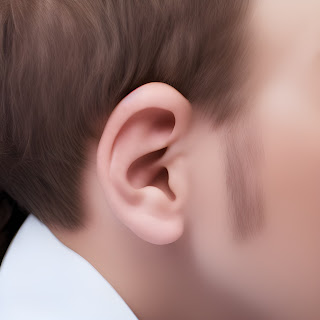The Dangers of Using Q-Tips for Ear Cleaning and a Safer Alternative
Q-tips and hydrogen peroxide are commonly used for cleaning inside the ears, but is this practice safe and effective? In this blog post, we will review the available medical literature on the use of Q-tips and hydrogen peroxide for ear cleaning and provide our recommendations.
First, let's address the safety of using Q-tips for ear cleaning. Many people believe that using Q-tips can help remove earwax, but this is actually not the case. In fact, using Q-tips to clean inside the ears can actually push earwax further into the ear canal, leading to impaction. This can cause a variety of symptoms, such as hearing loss, earache, and even tinnitus. In extreme cases, using Q-tips can even cause damage to the eardrum, leading to perforation.
Given the potential risks associated with using Q-tips for ear cleaning, it is important to avoid this practice. If you are experiencing symptoms such as hearing loss or earache, it is best to see a healthcare provider for proper evaluation and treatment.
So, if Q-tips are not safe for ear cleaning, what should you use instead? One option is hydrogen peroxide. Hydrogen peroxide has been shown to be effective for dissolving earwax and can help to soften and loosen impacted earwax. However, it is important to use hydrogen peroxide properly to avoid damaging the ear.
To use hydrogen peroxide for ear cleaning, first, tilt your head to the side and place a few drops of hydrogen peroxide into the affected ear. Allow the peroxide to sit in the ear for a few minutes to allow it to work. Then, tilt your head to the other side to allow the peroxide and softened earwax to drain out. Avoid using cotton swabs or Q-tips to clean inside the ears, as this can push earwax further into the ear canal.
It is also important to note that hydrogen peroxide should only be used as a short-term solution for earwax impaction. If you are experiencing symptoms such as hearing loss or earache on a regular basis, it is best to see a healthcare provider for proper evaluation and treatment.
In conclusion, Q-tips should be avoided for ear cleaning due to the potential risks associated with this practice. Instead, hydrogen peroxide can be used to dissolve earwax and help to soften and loosen impacted earwax. However, it is important to use hydrogen peroxide properly and avoid using cotton swabs or Q-tips to clean inside the ears. If you are experiencing symptoms such as hearing loss or earache, it is best to see a healthcare provider for proper evaluation and treatment.
First, let's address the safety of using Q-tips for ear cleaning. Many people believe that using Q-tips can help remove earwax, but this is actually not the case. In fact, using Q-tips to clean inside the ears can actually push earwax further into the ear canal, leading to impaction. This can cause a variety of symptoms, such as hearing loss, earache, and even tinnitus. In extreme cases, using Q-tips can even cause damage to the eardrum, leading to perforation.
Given the potential risks associated with using Q-tips for ear cleaning, it is important to avoid this practice. If you are experiencing symptoms such as hearing loss or earache, it is best to see a healthcare provider for proper evaluation and treatment.
So, if Q-tips are not safe for ear cleaning, what should you use instead? One option is hydrogen peroxide. Hydrogen peroxide has been shown to be effective for dissolving earwax and can help to soften and loosen impacted earwax. However, it is important to use hydrogen peroxide properly to avoid damaging the ear.
To use hydrogen peroxide for ear cleaning, first, tilt your head to the side and place a few drops of hydrogen peroxide into the affected ear. Allow the peroxide to sit in the ear for a few minutes to allow it to work. Then, tilt your head to the other side to allow the peroxide and softened earwax to drain out. Avoid using cotton swabs or Q-tips to clean inside the ears, as this can push earwax further into the ear canal.
It is also important to note that hydrogen peroxide should only be used as a short-term solution for earwax impaction. If you are experiencing symptoms such as hearing loss or earache on a regular basis, it is best to see a healthcare provider for proper evaluation and treatment.
In conclusion, Q-tips should be avoided for ear cleaning due to the potential risks associated with this practice. Instead, hydrogen peroxide can be used to dissolve earwax and help to soften and loosen impacted earwax. However, it is important to use hydrogen peroxide properly and avoid using cotton swabs or Q-tips to clean inside the ears. If you are experiencing symptoms such as hearing loss or earache, it is best to see a healthcare provider for proper evaluation and treatment.
Further reading: How To Clean Your Ears at WebMD.
